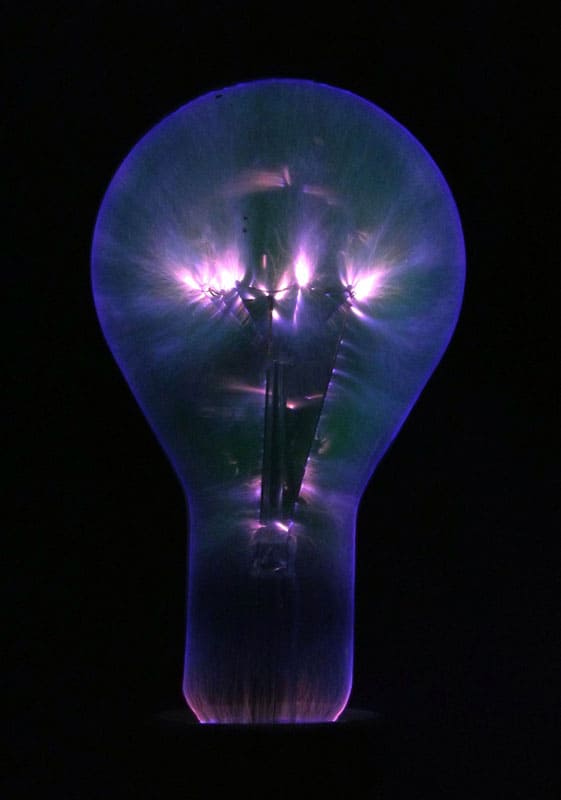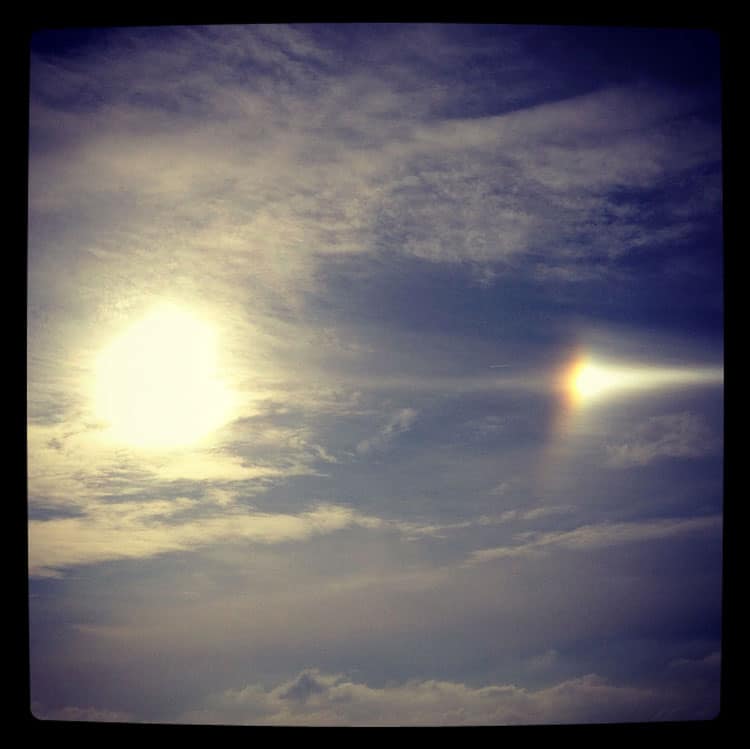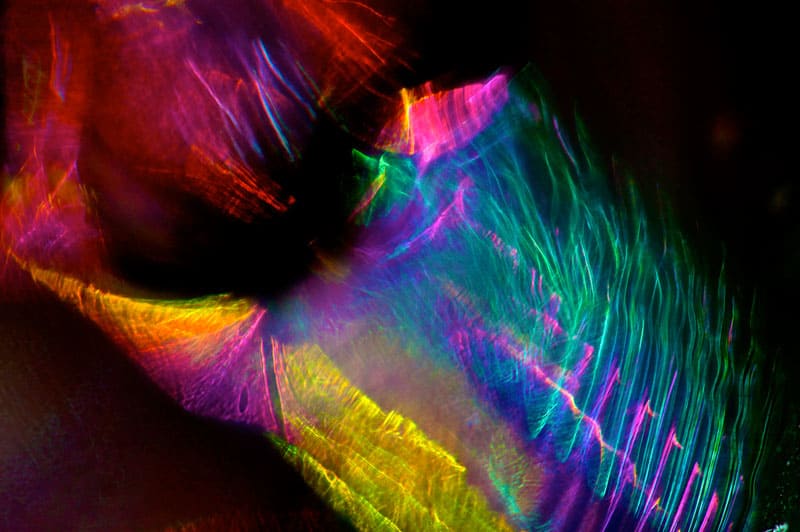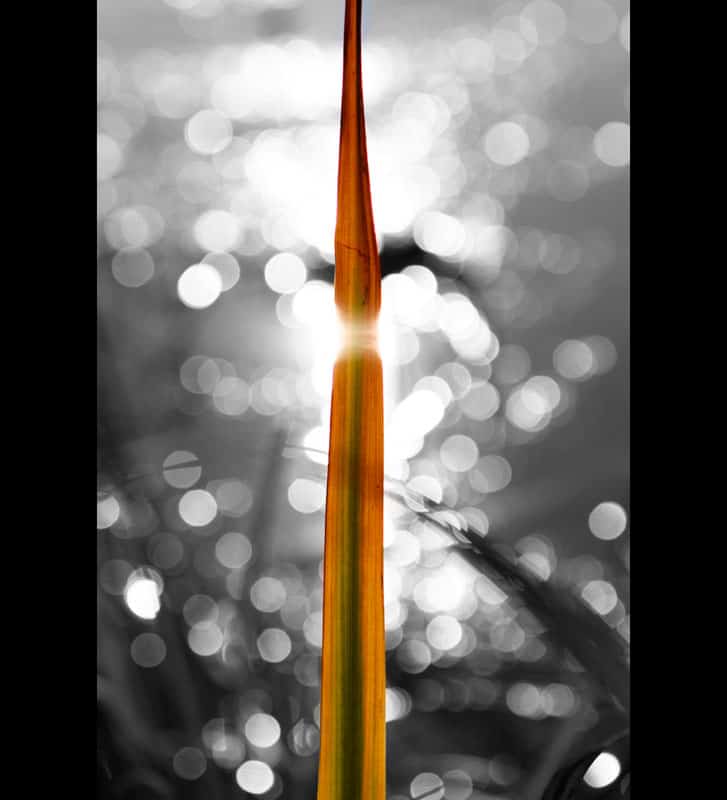At the heart of scientific imagery is light. Indeed, in recognition of the vital role light plays in science and engineering, a proposal has been made for an International Year of Light in 2015 to promote improved public and political understanding of the central role of light in the modern world

To celebrate the connections between light and the physical world, we asked readers to submit photos to our Flickr group on the theme of “light in physics”. Thank you to everyone who took part. Below is a selection of the images we received.
Invented by the German physicist August Toepler in the 19th century, Schlieren photography is used to capture the flow of fluids of varying density. For example, it is used in aeronautical engineering to photograph the flow of air around parts of a plane. It has been used to lovely effect in this photo by Flickr user adavidhazy to reveal the density gradients in the air above a candle flame.
This beautiful photo shows one of the iconic images of physics – the light spectrum. In this case, geezaweezer managed to cleverly capture the phenomenon as natural light poured in through a window onto a browning leaf. The photographer said he had to act quickly because the refraction effect was visible inside the house for less than a minute.
Photographer Tuopeek had a real light-bulb moment in capturing this image. It shows the electrical arcs and sparks generated inside a GLS filament lamp sitting on a Tesla coil. The bright violet light contrasted against the black background creates a dramatic image of a technology that changed the world.
This awe-inspiring photo of a water-filled balloon bursting was made possible thanks to a more recent light technology to emerge from physics – the laser. Lukasz Piatkowski and Yves Rezus from FOM Institute AMOLF in Amsterdam used an 800 nm laser to create an ultrashort light flash that lasted just 50 femtoseconds. This provided fleeting illumination for them to capture this image with a high-speed camera, showing the water droplets while they still maintain the outline of the balloon.
Who says you always need expensive equipment to capture an inspiring shot of nature? Flickr user Madrugaredo whipped out their smart phone at Brighton Beach in New York to photograph this optical effect known as a parhelion, or more colloquially a “Sun dog”. The effect is caused by sunlight refracting through small ice crystals in cold and high cirrus clouds.
Some more stunning optics effects here, as rays of light streak, shimmer and smudge as they dance along a tube of glass. Photographer Pery Burge was proud to point out that the image was taken with a single exposure with no manipulation using graphics software.
With this photo of a machine called Saturn at Sandia National Laboratories in the US, we enter the realm of sci-fi. Saturn is an X-ray simulation source used to recreate the effects of radiation on electronic and material components. Photographer Randy Montoya has captured this striking image of Saturn in action as electrical pulses shoot out from the machine’s edges towards a central target, across an interface of water and metal.
With this photo, docJ96 transports us to tropical climes as we lie back on a beach and gaze up at the twinkling Sun and its colourful halo, seen through the leaves of a palm tree. The intriguing solar effect is known as a 22° halo, and it is formed as sunlight is refracted in hexagonal ice crystals suspended in the atmosphere.
Finally, we couldn’t conclude this celebration of optical effects in photography without an example of bokeh. The term, originating from the Japanese word for “blur”, is used to describe the way the lens renders out-of-focus points of light, and it can be both aesthetically pleasing and ugly. It has been used to creative effect in this photo by Anjan Reijners of a blade of grass in water, taken at Seven Lakes State Park in Michigan, US.
There were plenty of other striking images, which you can view in our Flickr group, the Physics World photo challenge.
The theme for our next photo challenge is “Portrait of our planet”. To tie in with this month’s earth-sciences special issue of Physics World we want you to submit photos to our Flickr group relating to the scientific study of the physical Earth. It might relate to a geophysical phenomenon such as a fiery volcanic eruption, a tornado or the aftermath of an earthquake. Or you might choose to share a more abstract vision of our planet, such as a colourful geological rock formation or a spectacular ice feature. Be as creative as you like.
Please add your photos to our Flickr group by Tuesday 27 March and then after this date we will choose a selection of our favourite images to be showcased on physicsworld.com.
Members of the Institute of Physics (IOP) can read the earth-sciences special issue free online through the digital version of the magazine by following this link or by downloading the Physics World app to your iPhone or iPad or Android device, available from the App Store and Android Marketplace, respectively.
If you’re not yet a member, you can join the IOP as an imember for just £15, €20 or $25 a year via this link. Being an imember gives you a year’s access to Physics World both online and through the apps.











